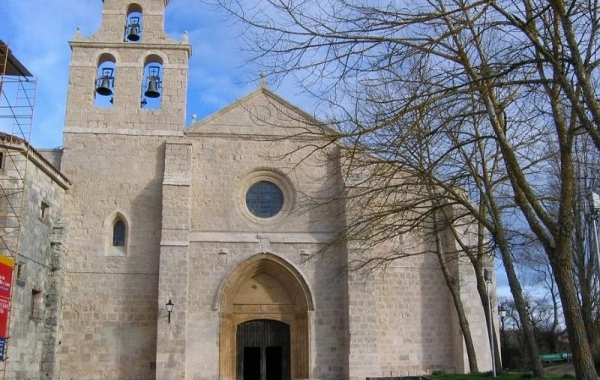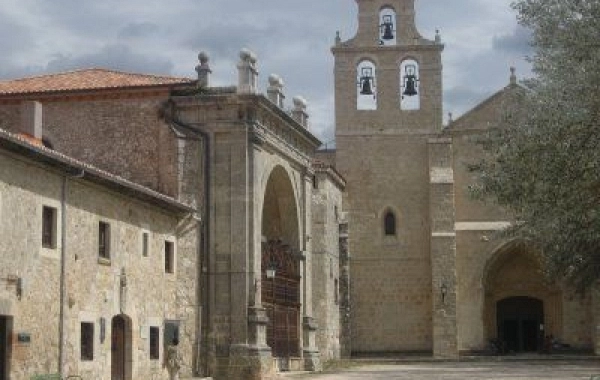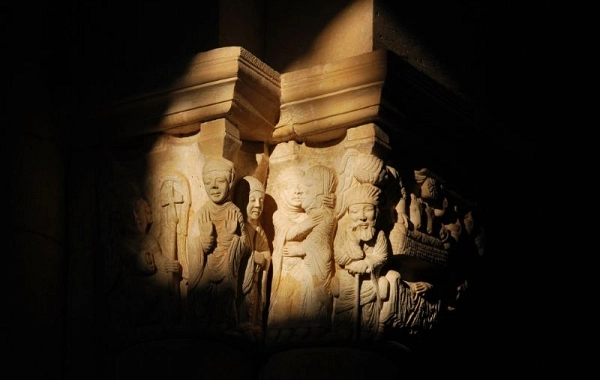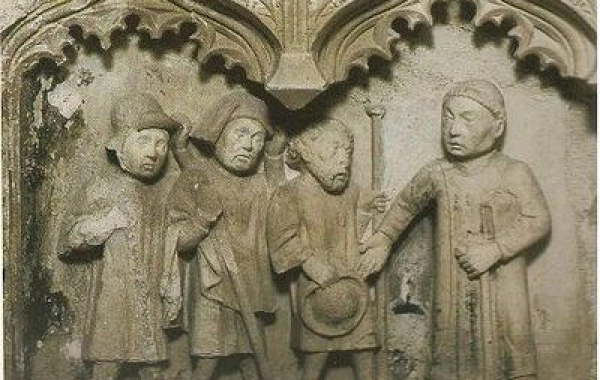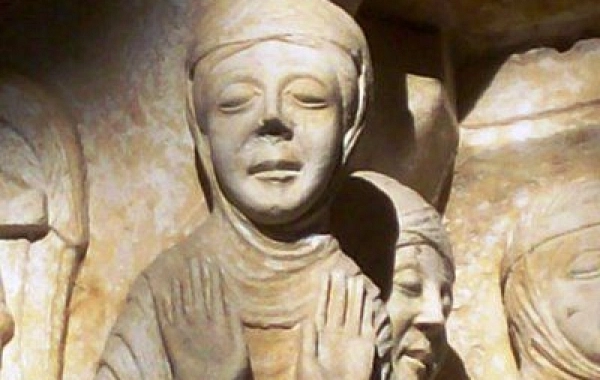CF12 - Belorado - San Juan de Ortega - 24 km
Distance24 Km.Related packages
Belorado: A Historic Step on the Camino de Santiago
The Route to Belorado
The Camino de Santiago takes us, on its way to Belorado, through a series of historical points that have witnessed the pilgrimage since the Middle Ages. The poet Domenico Laffi mentions his departure to Belorado in the Códex Calixtinus, referring to this locality as a key point on the Camino.
The Ancient Belforatus
As we approach Belorado, we leave the main route for a path that leads us into what was once Belforatus, a settlement of Roman origin. Its name, "beautiful hole," comes from the hermit caves that Aymeric Picaud described in his Códex Calixtinus. These caves, used by the early hermits, remind us of the Camino’s connection to spirituality and inner search.
History and Architecture in Belorado
Belorado, repopulated by Alfonso I "El Batallador" in 1116, retains the essence of towns born under the protection of castles. At its foot is the Church of Santa María, a 16th-century temple with a beautiful altarpiece dedicated to the Apostle James. Here, pilgrims can admire two statues of St. James: one as Matamoros and the other as a pilgrim, clear symbols of the importance of the Jacobean route.
Heritage of Belorado
Among its treasures, Belorado houses the Hermitage of Our Lady of Belén, which once served as a hospital for the Knights. In the Plaza Mayor, under the town hall, stands the Church of San Pedro, another religious and cultural point of interest for pilgrims.
Tosantos: A Unique Place
The Hermitage of the Virgin of the Peña
Tosantos, or "All Saints," is characterised by its hermitage carved into the rock, a spectacular landscape that highlights popular devotion. This hermitage, dedicated to the Virgin of the Peña, has become a rest stop for pilgrims. The village has also renovated its shelter, thanks to the efforts of the Federation of Camino de Santiago Associations and the help of volunteers.
Pilgriming towards Villambistia
After a short journey, pilgrims continue towards Villambistia, a small village whose parish church, dedicated to St. Stephen, and its cemetery are landmarks along the way.
Espinosa del Camino and Villafranca Montes de Oca
A Rural Route through Espinosa del Camino
Espinosa del Camino is a reflection of the rural architecture of the area, with wooden houses and traditional structures. The pilgrim passing through here feels transported to the past, surrounded by a natural environment that recalls the landscape of yesteryear.
Villafranca Montes de Oca: History and Tradition
Villafranca Montes de Oca, an ancient Roman settlement, is an essential stop on the Camino de Santiago. Its church, dedicated to St. James, houses one of the largest shells of the Camino, which is used as a holy water font. Furthermore, Villafranca has historically been a place of refuge for pilgrims, with the Hospital of San Antonio Abad and the historic Hermitage of the Virgin of Oca.
San Juan de Ortega: A Refuge of Faith
The Monastery of San Juan de Ortega
San Juan de Ortega, located in a modest hamlet, is known for its monastery dedicated to its founder, Juan de Velázquez. This saint, a disciple of Santo Domingo de la Calzada, built the monastery to shelter pilgrims in a dangerous area, known for its bandits. Today, the monastery is being restored and remains a place of welcome and prayer for pilgrims on the Camino de Santiago.
The Equinoctial Light Phenomenon
One of the most unique attractions of San Juan de Ortega is the equinoctial light phenomenon. During the spring and autumn equinoxes, a sunbeam passes through a pointed window of the monastery and illuminates a capital with scenes from the Gospel, a spectacle that attracts hundreds of pilgrims.
Conclusion: The Route of the Camino de Santiago
The route to Belorado, Tosantos, Villafranca Montes de Oca, and San Juan de Ortega is one of the most fascinating stages of the Camino de Santiago. Each locality along the way offers a unique blend of history, architecture, and spirituality, making them must-see points for pilgrims on their way to Compostela.
Stages
- CF01 - Saint Jean de Pied de Port - Roncesvalles - 21 km
- CF02 - Roncesvalles - Zubiri - 22 km
- CF03 - Zubiri - Pamplona - 20 km
- CF04 - Pamplona - Puente la Reina - 19 km
- CF05 - Puente la Reina - Estella - 19,7 km
- CF06 - Estella - Los Arcos - 20,6 km
- CF07 - Los Arcos - Viana - 18 km
- CF08 - Viana - Navarrete - 22,3 km
- CF09 - Navarrete - Nájera - 16,9 km
- CF10 - Nájera - Santo Domingo de la Calzada - 21 km
- CF11 - Santo Domingo de la Calzada - Belorado - 22,7 km
- CF12 - Belorado - San Juan de Ortega - 24 km
- CF13 - San Juan de Ortega - Burgos - 27,6 km
- CF14 - Burgos - Hornillos del Camino - 18,3 km
- CF15 - Hornillos del Camino - Castrojeriz - 20,40 km
- CF16 - Castrojeriz - Frómista - 24,90 km
- CF17 - Frómista - Carrión de los Condes - 19,2 km
- CF18 - Carrión de los Condes - Lédigos - 23,40 km
- CF19 - Lédigos - Sahagún - 17,10 km
- CF20 - Sahagún - El Burgo Ranero - 17,9 km
- CF21 - El Burgo Ranero - Mansilla de las Mulas - 18,7 km
- CF22 - Mansilla de las Mulas - León - 18,4 km
- CF23 - León - Villadangos del Páramo - 21,8 km
- CF24 - Villadangos del Páramo - Astorga - 26 km
- CF25 - Astorga - Rabanal del Camino - 20,6 km
- CF26 - Rabanal del Camino - Molinaseca - 24,7 km
- CF27 - Molinaseca - Villafranca del Bierzo - 30,5 km
- CF28 - Villafranca del Bierzo - O Cebreiro - 30 km
- CF29 - O Cebreiro - Triacastela - 22,9 km
- CF30 - Triacastela - Sarria - 22 km
- CF31 - Sarria - Portomarín - 22 km
- CF32 - Portomarín - Palas del Rei - 23,9 km
- CF33 - Palas del Rei - Arzúa - 28,6 km
- CF34 - Arzúa - Santiago de Compostela - 38,4 km
- CF35 - O Pedrouzo - Santiago de Compostela - 20 km






